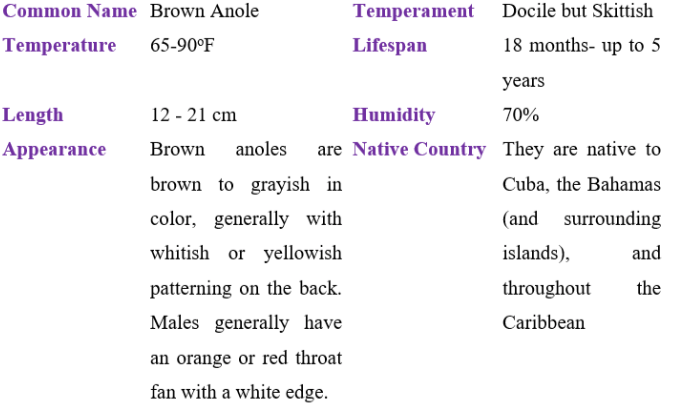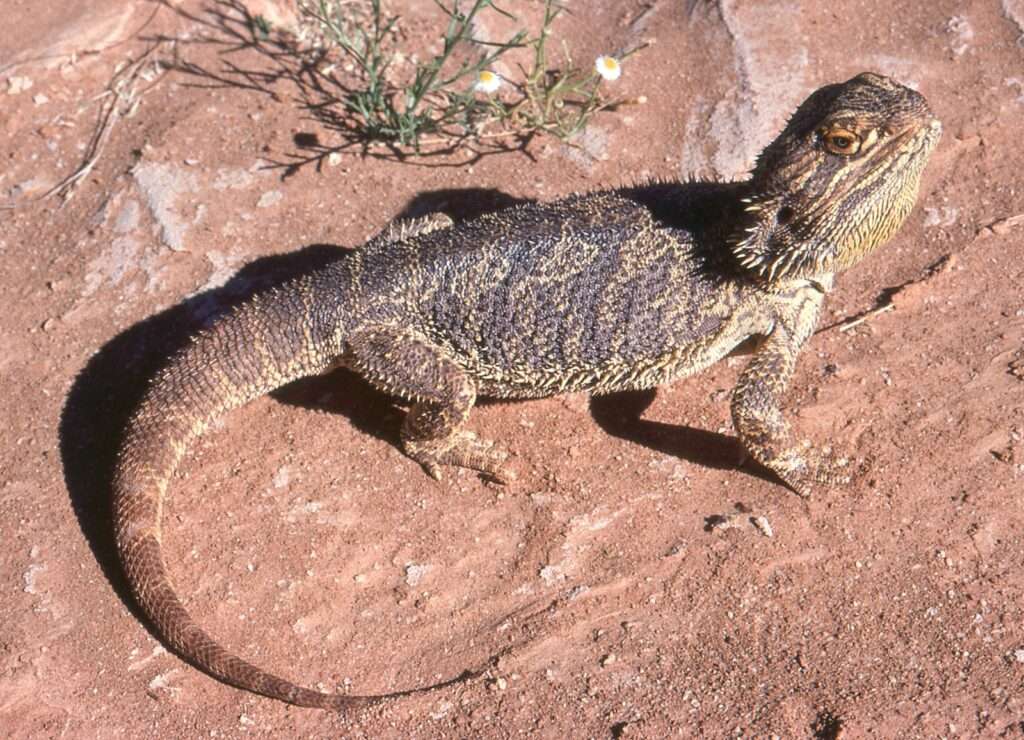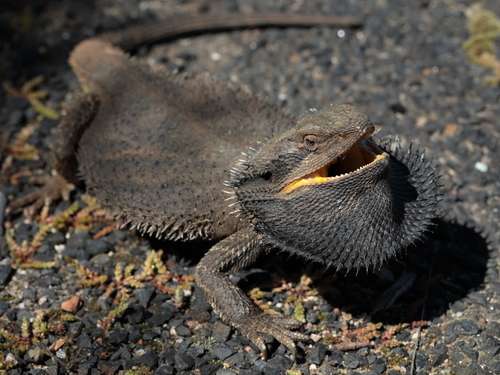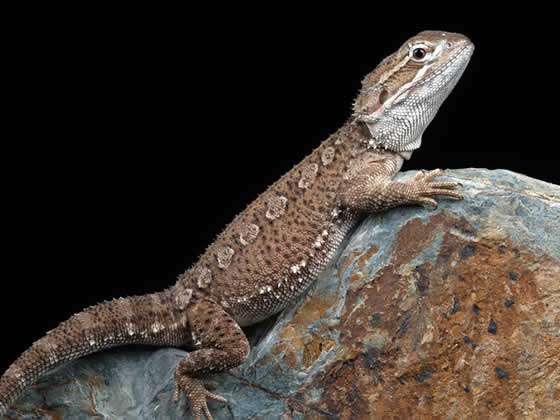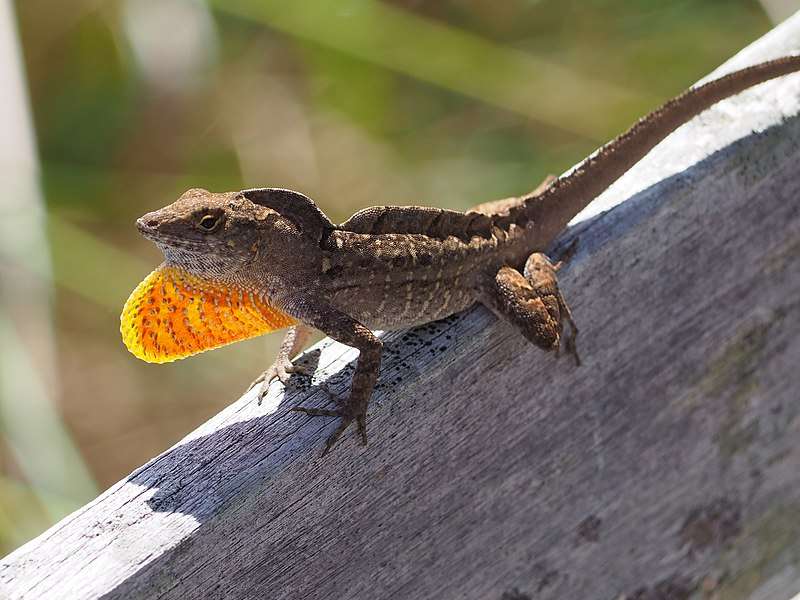
Description:
Scientific name: Anolis sagrei
Life span: 18 months- up to 5 years
Anolis sagrei, usually referred to as De la Sagra’s anole or the Cuban brown anole, is a species of lizard that belongs to the Dactyloidae family. This species has become very invasive. It outcompetes and eats many species of native lizards in its introduced territory, where it reaches unusually high population densities, has the ability to rapidly expand its range, and is an invasive species. The majority of brown anoles are a light brown tint with many tan to light color lines on their sides and deeper brown to black patterns on their back. They have the ability to change color like other anoles, in this case from a darker brown to black.
Native Region/Habitat
Native to the Bahamas and Cuba, brown anoles. Their current range includes parts of Georgia and Mexico. These lizards can be found in both urban and suburban regions. They normally stay away from trees and favors smaller plants and bushes.

Behavior:
During the day, brown anoles are active and are frequently spotted basking on rocks or tree branches. When it’s cold outside, they seek refuge inside decaying logs and beneath tree bark. Social beings are what they are. Male and female territories are distinct, yet one male territory typically contains two or more female territories. Males are very protective of their home range and frequently engage in conflict with one another. Anoles’ main method of signaling is through visual cues.
Men prefer high vantage spots so they can look over their area and identify other guys who are invading their territory or looking for females to mate with. Before showing off their dewlap, they frequently perform sets of push-ups and quickly bob their heads up and down. Brown anoles have the ability to partially detach their tail when being pursued or captured. The fragment that breaks off will keep moving, perhaps confusing the predator and letting the anole get away. A portion of the missing tail will grow back. Brown anoles will bite, urinate, and defecate if provoked. Moreover, some Brown anoles have been known to hiss briefly when cornered, hurt, or in a battle.
Care As a pet/In captivity:
Housing Tank:
Brown Anoles don’t require a lot of room. A 10-gallon tank with good ventilation will accommodate a single lizard. Have a 20–30 gallon terrarium for a pair or a trio of animals. As an alternative, you might keep them in a similar-sized wire cage. Climbing plants, cork bark hides, and horizontal and diagonal limbs should all be present in the housing. The climbing plants provide cover, perches, and a feeling of security.
The housing tank for an anole is simple to set up. To maintain the creature’s health, it must be cleansed. Consequently, be sure to regularly remove any unconsumed insects and droppings. After that, wash and sanitize the aquarium once a week with soap or detergent.
Heating (Temperature and Humidity):
These bugs require a basking temperature range of 85 to 90 degrees Fahrenheit. To create a thermal gradient, the terrarium should also feature a chilly section with temperatures between 70 and 77 degrees Fahrenheit. The tank’s temperature shouldn’t go below 65 degrees Fahrenheit during the night.
The housing should maintain a humidity level of 70% or higher. This means that to replicate the humidity found in tropical rainforests, you should mist the terrarium twice or three times. As an alternative, you can add real plants, install a water dish, and enclose the cage to stop moisture loss. Use a digital probe hygrometer to measure the inside of the cell’s humidity levels.
Feeding
Insects make up the majority of Brown Anoles’ diet. They consume mealworms, waxworms, silkworms, mealworms, tiny roaches, and crickets. While adults can eat after 2 to 4 days, baby anoles need to be fed every day.
To be healthy, Brown Anoles also require calcium and vitamin supplements. D-3 calcium supplements should be taken twice weekly by ovulating females and newborn anoles. This can be achieved by applying the supplement to insects before feeding them.
Table
